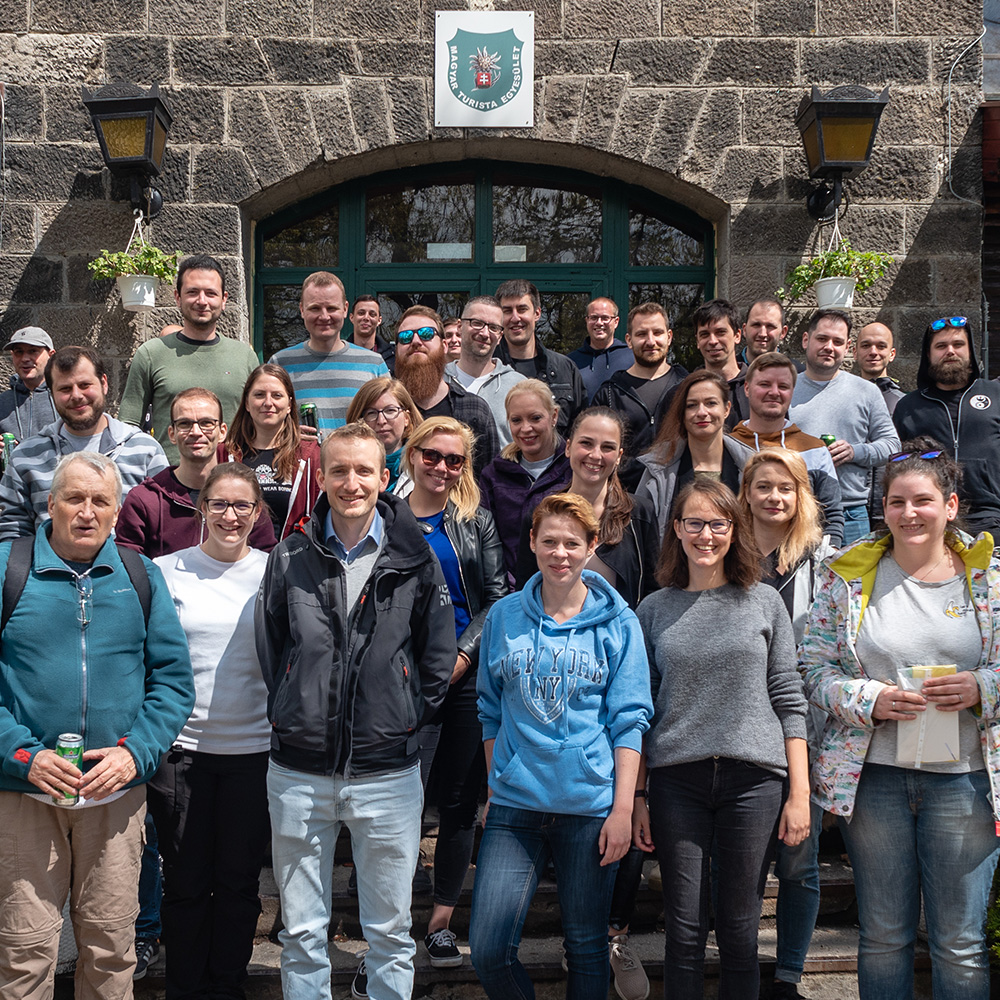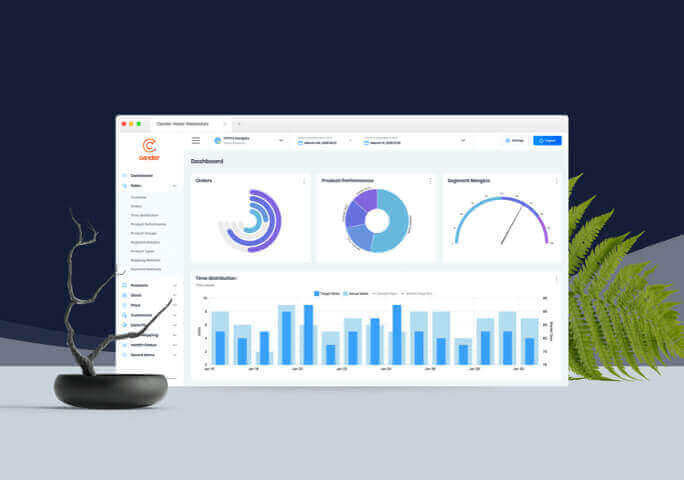In another article we’ve already explained which businesses we recommend the use of Magento for and we put things into more context by making a side-by-side comparison with another leading e-commerce platform, WooCommerce. We’ve also explained the operational requirements of Magento and we’ve looked into the expected costs as well. This time around, we will examine why a Magento development is more complex, requires heavy expertise, and why it is more expensive than some other options and we check the pricing in a bit more detail.
Code complexity
When we’re talking about the budget of a system development project, the complexity of the chosen technology is always an important consideration. In the field of software development, planning and development rates can range from a few thousand to tens of thousands of forints (HUF) an hour. Everything in-between these brackets is reasonable: the exact amount depends on the experience of the person, the scripting language, the framework of the system, the support services, the complexity of the development methods as well as the planning and the launch itself. Magento – especially its second version – is one of the very few open-source platforms at the moment, that requires the highest levels of development expertise as well as experience. The reasons for this lie in the system’s functional richness and robust build-up. Besides this Magento is:
- Built with a focus on high levels of OOP (object-oriented programming). This is the ultimate height of PHP scripting and it requires precise work in a very abstract framework.
- It’s built on an EAV data model, which requires above-the-average SQL skills in data extracting processes, optimization, and creating migration scripts.
- Advanced Javascript skills are also required to ensure the right speed and unique appearance of the fronted appearance of modules: the mere knowledge of implementing JS libraries alone (such as jQuery) won’t do the trick.
- Being able to navigate in Linux and Apache environments are also a must: a background in intense, version-specific developments or documentation – including inline documentation – practices are key.
Proper Magento developments can only be carried out by the most skilled PHP developers: juniors or new starters could easily fall short due to the complexity of the project. This will obviously be reflected in the pricing as well.
Not a ‘one-man show’
Once again, given the elaborate nature of both of Magento’s versions, efficient and safe development projects can only be carried out by established teams: these jobs are not for individuals and they are definitely not ‘one-man shows’.
From a backend development perspective, Magento projects are multi-tiered and layered. Besides the classic module development tasks, we often see the need for system integrations for example, that require different mindsets, ways of working, and experience as well. Modul developments themselves also often rely on a wide range of different developer capabilities: at times, they require PHP experience, at other times complex database processes need to be carried out, and last but not least, in certain cases, many different technologies need implementing simultaneously.
System integration processes often incorporate architect-level skills and expertise. This means that being able to develop webshops on certain platforms is not necessarily enough on its own: integration experience with ERPs and CRMs are a must, with the addition of being able to ‘speak’ multiple scripting languages as well as being aware of the build-up and the operations of integrational software.
Magento’s frontend development is a separate field in its own right, requiring extensive HTML and CSS Javascript development skills, expertise, and the overall understanding of Magento’s unique template system. As a result of recent developments, client-facing technologies can now be programmable, and recent frontend developments are strongly merging design and programming – Magento is at the forefront of building on such innovative solutions.
Frontend developments in e-commerce must always have a clear and semantic scripting foundation. They must have a unified appearance across all browsers, they need to be search engine optimized and the frontend scripting should be transparent and clearly marked with developer comments. If you want to have a successful project, then the developer who works on it has to have experience in mobile and tablet-view optimization, on top of knowing how these devices behave in situ and what specifics they have.
As you’d imagine, there’s more to it. Another important aspect of a successful e-commerce project is precise UX planning and UI design. For these, the in-depth knowledge of Magento is quintessential. The finished webshop needs to be handed over before the launch: we’re talking about training, content support, configurational settings – all of which require the presence of expertise.

It’s near impossible – if not completely impossible – for one single person to have all the know-how and to be able to hand it all over to the client by themselves. Magento developments need a whole team with a high-level of expertise. To be specific a team, that works with Magento, has years of collated experience and who can think in structures and development workflows that are specific to this framework. A Magento webshop development project cannot be handled by a one or two-person business – if such small enterprises attempt though, they might be in for a surprise.
This is exactly the reason, why business-feasible Magento projects are only taken on by bigger development companies: the technology, the complex nature of the system and the business aspects of the delivered products from a client-facing perspective (as well as the linked responsibilities) pose very serious limitations on new, small-scale start-ups.
The costs of long-term support services
When we’re planning to get a webshop developed for our business we have to think beyond the project and the launch only. We need to think in the long term and factor in maintenance as well. A webshop is a way of generating income for our business, so we need to make sure that all our future needs – which will change a lot along the way – will be taken care of. If we are planning to have a sustainable and prominent presence in the e-commerce market, we will need to plan for available, on-demand system support and we need to map out further development demands for future expansions. All these are slightly unreasonable to expect from a micro-business. What happens if a developer gets sick or goes on a holiday when we need them most? What happens if this person goes ‘missing’ all of a sudden or is simply not available for whatever reason? With agencies, you can book developers, graphic designers, and consultants in advance and by the hour – in other words, you will have the best expertise and everything set up and ready for you.
Okay, but how much is it going to be?
Right. So now that we clarified all the aspects that need to be taken into consideration, let’s talk numbers. In general, you won’t be able to find hour rates of Magento developments below 55-60 EUR in Hungary. This only increases as you move towards Western markets. The development of a webshop with a rich set of functionalities and with a unique appearance wouldn’t be anywhere below 3-4 Million forints HUF (8,300-11,100 EUR) – unless it’s a shoddily made one. Of course, the more functionalities there are, the bigger the investment is so we can say that the sky is the limit really.
To reduce these costs, Magento developers would need to eliminate a lot of planning and analysis during the project and they would need to opt for more cost-effective but less reliable solutions of poorer quality both for the back and the frontend developments.
ERP and CRM software integrations add extra costs since these are usually carried out as part of unique developments.
Estimating the costs for such developments is somewhat trickier – it can start from 1 million HUF but can go all the way up to a 10-20 million range (and often they do).
Without being able to defy the functional requirements of a Magento development, it’s hard to put a price tag on the project, but it’s safe to say that the total should be in the millions.
This is one of the main reasons, why we suggest Magento to medium-sized businesses and upwards. It’s a less fortunate – nay unreasonable – option for micro-businesses, start-ups, or companies that are just trying to test the waters. Magento is sort of like the middle way: it’s more expensive and a whole lot more advanced than ready-made options or a WooCommerce solution for example, but it’s still a whole lot more reasonable than a JAVA-based alternative or a completely unique development.
If you end up choosing Magento and you’re willing to invest in services with real expertise, then in return, you will get a great product that can help you build your online presence and on which you can rely on for the years to come. Don’t forget though: you will always have cheaper options. But worth considering what you will need to reinvest all the money – that you managed to save by chipping off from laying the foundations – in again.

















